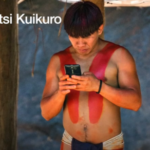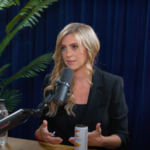Blog Post
A rape pandemic has hit India, and people are blaming pornography
By Jonathon Van Maren
September 4, 2018 (LifeSiteNews) – For some years now, the rise of sexual violence in India has been attracting international attention, triggering massive protests, and shocking millions with grisly tales of brutal gang rapes—some of them occurring in public and in broad daylight.
Headlines of this sort occur almost daily in India now, with India’s Supreme Court even asking a tragic and plaintive question in early August: “What is to be done? Girls and women are getting raped left, right, and centre.”
The specific case the Court was referring to was of thirty girls in a Bihar shelter who, allegedly, were sexually abused over a number of years. The abuse was exposed by a ten-year-old child who fled to a police station to beg for assistance, where she told law enforcement that men came to pick up girls from the shelter and returned them hours later, broken and sobbing. According to Justice Madan Lokur, “a woman is raped every six hours in India”—and many of these abuses are taking place in the very shelters founded for their protection.
Mari Marcel Thekaekara, a human rights activist based in Gudalar, Tamil Nadu, has an unpopular take on this ugly state of affairs that has not received the media attention typically accorded to these atrocities. The president of the Nilgiris chapter of the All India Women’s Conference, Thekaekara recently wrote an editorial in The Guardian with a blunt title: “Sexual violence is the new normal in India—and pornography is to blame.” Her analysis is incredibly damning. The world hears about the rapes, she wrote, but where is this rise in sexual violence coming from?
She reports speaking to one social worker in the province of tribal Jharkhand, who notes that “rape is now rampant”—but that there is more to the story:
Boys as young as 10 download pornography from mobile phone shops for as little as 10 rupees (12p). The combination of endless, violent porn videos and alcohol appears to be a lethal trigger for many rapes in India– a country where traditional Hindu, Muslim, Christian and Sikh society strictly forbids not just sex outside marriage but any mixing of the sexes in towns and villages. Arranged marriages are still the norm across all religions. For repressed men to be fed a constant diet of porn on their phones is a recipe for disaster.
The infamous gang rape of a 23-year-old student in Delhi in 2012 that led the city to be called the “rape capital of the world” was carried out by six men who had just been watching violent porn while drinking alcohol, another taboo in orthodox Indian families.
Enakshi Ganguly Thukral, a child rights activist for nearly 30 years, told me: “Society is being sexualised, there is sexual content everywhere, in films and music. Rampant, vicious porn is easily available to children. Middle-class families may monitor what their kids watch, but uneducated and illiterate people haven’t a clue about what their kids see on their phones. The vegetable vendor near my house sits glued to his mobile all day. Two young boys with one wire plugged into an ear each, sharing a video. I can assure you they are not watching the news.”
Thukral, like me, is depressed. “Why should the supreme court publicly lament the situation?” she said. “We look to the supreme court for solutions, not laments. It needs to see that implementation of laws regarding women’s safety is stringently carried out.”
For decades, women’s groups have fought long and hard to put safety measures in place through special laws. But where is the proper governance and monitoring of juvenile homes and women’s shelters? We have special police now, to check on internet crime, harassment and abuse. How do we protect children and women from predators and harmful porn?
My liberal friends have fought for civil liberties and freedom of expression over the years. As a journalist I support that. But grassroots activists like me are increasingly sick of liberals fighting for freedom to watch violent, sadistic porn. One tired human rights defender said: “It’s hard to stomach glib sermons on the right to freedom to use a potential ‘driver of rape’ [porn] when faced with a wounded, bleeding raped woman or child.”
Thekaekara is precisely right. Those of us who have spent time with the victims of porn-inspired sexual assaults now see pornography as the ugly and vicious poison that it is. Her analysis is to the point: “It’s time for the courts and the government to look seriously at how we can clamp down on porn in India.” And why? Put simply, to protect women and children. Once you have looked a broken-hearted girl in the face, empty tropes about the “freedom” to watch videos in which multiple men physically destroy a girl in the most degrading way the human mind can conjure stop sounding like principled libertarianism and begin to sound genuinely insidious.
There are still those who insist that pornography is a benign and solo sexual activity, but their flimsy protestations are being swept away by a tidal wave of evidence. As Dr. John Foubert, the author of a sweeping meta-analysis on pornography titled Porn Harms, has pointed out, over fifty studies have now established a connection between porn and sexual violence—and the statistical chance that this connection does not exist is one in 88 decillion. When I debated Dr. Annalise Trudell on the social impact of porn on the Andrew Lawton Show last year, even she admitted that she has worked with many girls who have been the victims of porn-inspired assaults. Although she was arguing for the pro-porn position, by the end of the debate she agreed with me that most pornography is genuinely harmful.
READ THE REST OF THIS COLUMN AT LIFESITENEWS.COM








